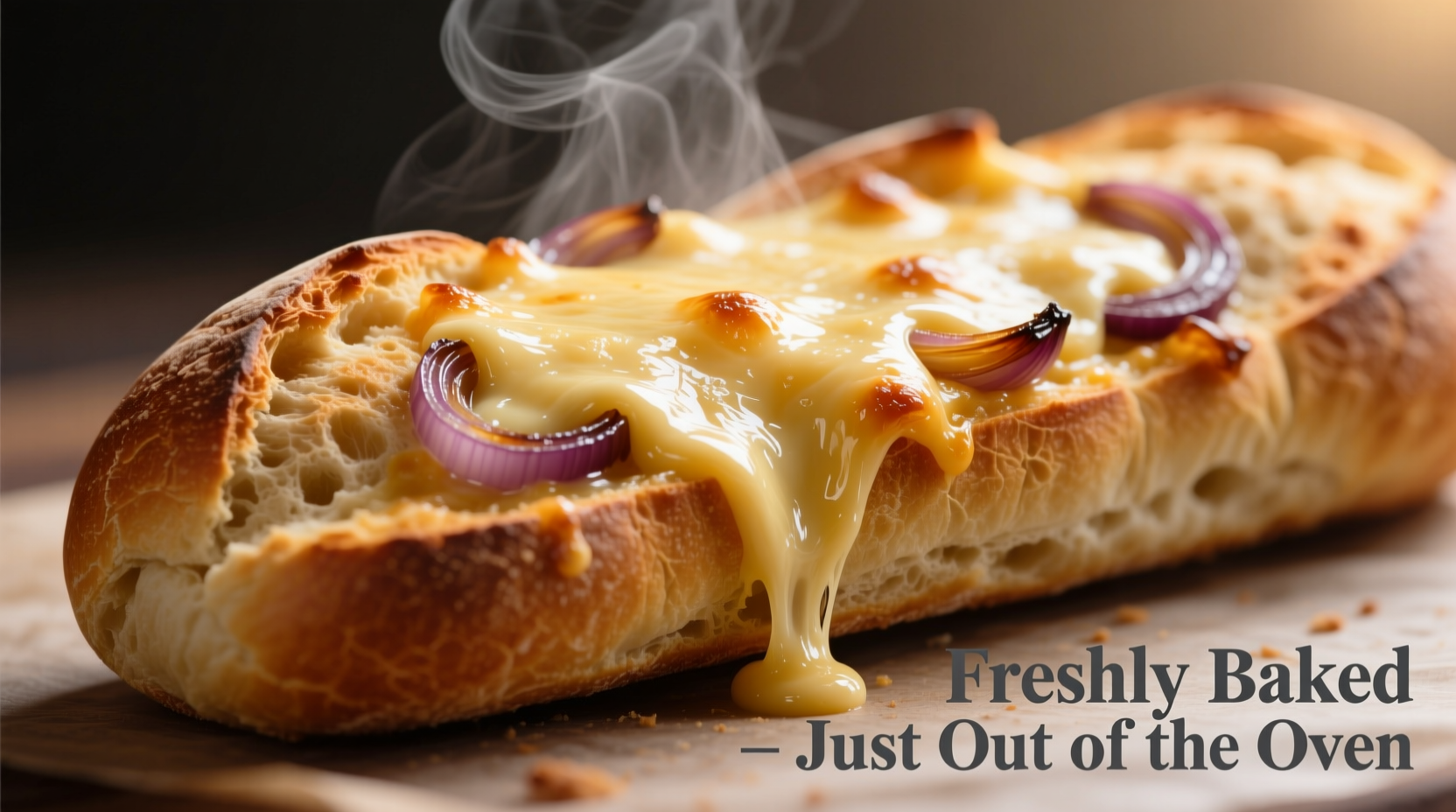Your Complete Guide to the Classic British Cheese and Onion Cob
If you've ever wandered into a UK bakery and wondered what makes a cheese and onion cob special, you're not alone. This handheld delight combines perfectly baked bread with a savory filling that's both comforting and satisfying. Unlike ordinary sandwiches, the cob features bread that's specifically designed to hold its shape while containing the molten cheese and sweet onions within.
Why Cheese and Onion Cobs Stand Out From Ordinary Bread Rolls
The magic of a proper cheese and onion cob lies in its construction. The bread isn't just a vessel—it's an integral part of the experience. Traditional cobs use a slightly denser dough than standard rolls, creating a sturdy pocket that won't collapse when filled with warm ingredients. The cheese typically used is a mature cheddar, known for its sharp flavor and excellent melting properties, while the onions are slowly caramelized to bring out their natural sweetness.
| Feature | Cheese and Onion Cob | Regular Bread Roll | Sub Sandwich |
|---|---|---|---|
| Bread Texture | Denser, more substantial | Softer, lighter | Long, sliced horizontally |
| Filling Integration | Baked directly into bread | Added after baking | Added after baking |
| Portability | Self-contained, minimal mess | Can be messy when filled | Often requires wrapping |
| Traditional Serving | Warm, fresh from bakery | Variety of temperatures | Typically cold or room temp |
From Bakery Counter to National Favorite: The Evolution of the Cheese and Onion Cob
The cheese and onion cob's journey began in Northern England bakeries where bakers sought to create a substantial handheld meal for factory workers. Historical records from the UK National Archives show that similar filled breads gained popularity during World War II when ingredients were rationed but bread remained accessible.
By the 1970s, the cheese and onion cob had become a standard offering in British bakeries, with regional variations emerging across the country. According to research from the British Food History Project, the modern version with its distinctive cheese filling became widespread in the 1980s as supermarket bakeries expanded their offerings.

How to Choose the Perfect Cheese and Onion Cob
Not all cheese and onion cobs are created equal. When selecting one, look for these quality indicators:
- Appearance: The bread should have a golden-brown crust with no signs of burning
- Aroma: You should detect both the yeasty bread scent and the savory cheese fragrance
- Temperature: Authentic cobs are served warm, not hot enough to burn but warm enough to melt the cheese slightly
- Filling ratio: Look for cobs where the cheese and onions are visible through the slit in the top
The best traditional cheese and onion cobs use a 60:40 bread-to-filling ratio, ensuring you get substantial bread with generous filling. Many modern versions unfortunately skimp on the filling, resulting in more bread and less of the signature cheese and onion combination.
Bringing the Bakery Home: Simple Homemade Version
While nothing beats a freshly baked cob from your local bakery, you can create a satisfying version at home with these steps:
- Prepare soft white bread rolls (8-10cm diameter)
- Carefully slice a pocket into each roll without cutting all the way through
- Caramelize one large onion per two rolls in butter over low heat for 20-25 minutes
- Mix 100g mature cheddar (grated) with 50g cream cheese for optimal meltability
- Fill each roll with equal portions of cheese mixture and caramelized onions
- Wrap in foil and warm in a 180°C oven for 10-12 minutes until cheese melts
For authentic results, use a combination of mature cheddar and a small amount of red Leicester cheese, which gives the characteristic orange color while enhancing flavor. The slow caramelization of onions is crucial—rushed onions won't develop the necessary sweetness to balance the sharp cheese.
Where to Find the Best Cheese and Onion Cobs
While supermarket versions are convenient, traditional independent bakeries typically offer superior quality. Regions known for excellent cobs include:
- North of England (particularly Yorkshire and Lancashire)
- Scotland's Central Belt
- Wales' industrial valleys
When visiting these areas, look for bakeries that still use traditional methods—those where you can see the bread being baked on the premises usually offer the freshest cobs. Many establishments now offer gourmet variations with additions like bacon, jalapeños, or different cheese blends, but purists argue the classic version with just cheese and onions remains unmatched.
Frequently Asked Questions
What's the difference between a cob and a roll?
A cob refers specifically to a round, individual bread loaf that's denser and more substantial than a standard roll. The term is predominantly used in Northern England, while "bap" is more common in Scotland and parts of Northern England. Cobs have a tighter crumb structure that holds fillings better than softer rolls.
Can cheese and onion cobs be frozen?
Yes, cheese and onion cobs freeze well for up to three months. Freeze them unfilled, then add the cheese and onion mixture after thawing and reheating. Alternatively, freeze fully assembled cobs by wrapping them tightly in plastic wrap and aluminum foil before placing in a freezer bag.
What cheese works best in traditional cheese and onion cobs?
Mature cheddar is the traditional choice for cheese and onion cobs due to its sharp flavor and excellent melting properties. Some bakeries blend it with red Leicester for color and additional flavor complexity. Avoid pre-shredded cheese which contains anti-caking agents that can affect meltability.
How do you properly reheat a cheese and onion cob?
The best method is to wrap the cob in aluminum foil and warm it in a 180°C oven for 8-10 minutes. This reheats the bread without drying it out while melting the cheese filling. Avoid microwaving as it makes the bread soggy and creates uneven heating.
Are cheese and onion cobs originally from Britain?
Yes, cheese and onion cobs originated in Britain, specifically in Northern England during the industrial era. They evolved as a practical handheld meal for factory workers who needed substantial food that could be eaten during short breaks without utensils.











 浙公网安备
33010002000092号
浙公网安备
33010002000092号 浙B2-20120091-4
浙B2-20120091-4